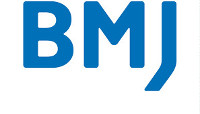Posted by Michael Wonder on 30 Sep 2015
Trends in utilization of FDA expedited drug development and approval programs, 1987-2014: cohort study

23 September 2015 - Before a new prescription drug can be sold widely in the United States, it must be approved by the US Food and Drug Administration. The FDA must determine, based on the data it receives, that the drug seems safe enough and that there is substantial evidence that the drug will have the effect it is represented to have, based on adequate and well controlled investigations such as randomized controlled trials assessing validated clinical outcomes. The FDA makes these determinations by reviewing results from experimental clinical trials conducted by or on behalf of the drug’s manufacturer, usually divided into three phases: phase 1 trials in a small number (generally 20-80) of often healthy participants to identify the drug’s pharmacokinetics; phase 2 studies in somewhat larger numbers of patients (no more than several hundred) with the disease or condition under study; and phase 3 trials in hundreds or thousands of patients to generate safety and efficacy data sufficient to evaluate the overall benefit-risk relation of the drug. The FDA must then review the data, and currently has a 10 month window in which to make its approval decision. While this multistage drug development and regulatory review process screens out many unsafe or ineffective experimental drugs, it also delays widespread access to those drugs ultimately shown to be safe and effective, which may be problematic for patients with serious or life threatening conditions who have no other treatment options.
For more details, go to: http://www.bmj.com/content/351/bmj.h4633?etoc=

